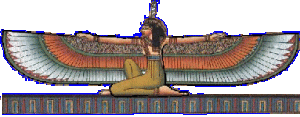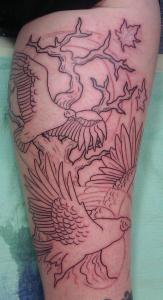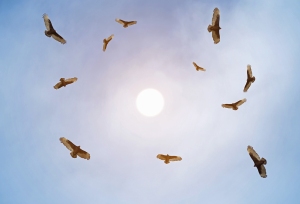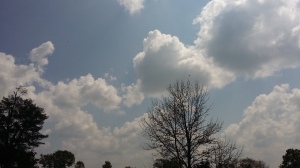I didn’t realize until last night that yesterday was International Vulture Awareness Day. Even though I didn’t know it at the time, I was celebrating all day–by playing with dead things. (I was helping clean up beaver pelts at Kentucky Traditional Leather.) But I needed to celebrate my vulture friends just a little bit more–and when I say vultures, I’m referring to New World vultures, most often the turkey vulture.

Consider this my virtual “shout from the rooftops” that I love vultures.
Okay, okay, I talk about my love of vultures all the time. I take every opportunity to spread vulture awareness. That might be putting it mildly, if you ask family, friends, and coworkers. I get upset when people extol the poor panda and fail to appreciate the full beauty of the vulture.
When vultures come up with folks I don’t know well, I usually get some weird looks. The looks express curiosity, disgust, concern for my mental health, and confusion. (Vultures? Yes, vultures.) The rarest is those who smile and nod, and then confess that they love vultures, too. Those are my favorite people in the world.
I never thought much about vultures growing up. In the country, they’re just part of the landscape. I saw one up close only once that I can remember. My mom was driving me to 3rd grade because I’d missed the bus, and we came around the corner to a roadkill deer surrounded by vultures. All of them flew away except one. My mom slowed down, and it looked at us as we got closer, flying away when we were less than 10 feet away, and almost completely stopped. My mouth dropped when I saw that these birds that always looked like Vs in the sky were almost as tall as me.
Where I’m from, we called them “buzzards.” It would be 20 years before I knew them as vultures. I would never have guessed back then that these creatures inspired mythologies around the globe across the centuries, or that they’d inspire me to write new mythologies with them at the center.
In March 2003, I enrolled in a writers workshop at Pine Mountain State Resort Park (with George Ella Lyon, Leatha Kendrick, and Silas House). I’d arrived late the night before, with plans to get in an early morning hike before class began. Just before full light, I stepped onto my balcony to a fresh snowfall. But that wasn’t all.
I saw against the backdrop of the mist-shrouded Pine Mountain. At the edge of the ravine behind the lodge was a snag full of vultures. They looked like old men in dark suits huddled together in church pews. They were so close to me that I could hear their grumbles and rustles on the cold air.
The hike to the waterfalls had been a bit tricky, so I was glad the snow had melted away by early afternoon. I went on a second hike, this time down into the valley below the ravine I could see from my balcony. It was a short hike down to Inspiration Point, so I took my time getting there, stopping to write a while before heading back. On the back side of the loop, I passed under the area where the vultures had been gathered that morning.
I stopped to listen, and there was rustling above me, same grumbling and rustling I’d heard that morning. I didn’t know then that they were complaining about my closeness. I also didn’t know that I was lucky none were disturbed enough to use a defense mechanism on me (more on that in a minute).
I couldn’t see any of the birds above the budding canopy, but after a minute, I saw some movement. I watched, and the movement came closer, something small that swung in a wide, looping pattern. Eventually, I could see that it was a feather, spinning and rocking on the air, seeming to fight the unforgiving gravitational pull.
I reached out and the feather landed in my palm.
I didn’t have a laptop back then, so instead of doing internet research, I spent a lot of time throughout the weekend talking with the Pine Mountain State Park naturalist, Dean Henson. He said something to me that weekend that I’ll never forget: “Turkey vultures are the most magnificent soaring birds in the Americas.” He taught me about their ability to see thermals, which allowed them to soar without flapping for hours at a time.
I took it as a sign, but I didn’t know what it meant just yet. I read about the symbolism of vultures, aka vulture as a totem or spirit animal. One thing that stood out to me was that the vulture teaches you to direct your energy in a more efficient way, to not let things weigh you down. Vultures are also very protective of their families, which they build indiscriminately of blood ties or even species (black vultures often roost with turkey vultures).
When doing biological research on them, I discovered that vultures have no vocal abilities other than grunts and hisses. Also, turkey vultures do not kill their food, nor do they eat the remains of other birds. But they do clean up the dead left on the earth by others, so that everyone else can be healthy. This is why the Cherokee called them the “Peace Eagle,” and why their Latin name is Cathartes aura, or “the golden purifier.”
It also turned out that pretty much every culture on the planet had vulture mythology, and were often part of the creation stories. My favorite was the Cherokee story that “Grandfather Buzzard” created the mountains and valleys with the touch of his wings against the water world at the beginning. But there were so many more, from North and South America to the Old World, from Greece to North Africa, Rome to Arabia, Scandinavia to India, and everywhere else you can think of. Even Buddha met a vulture in a cave, and some Buddhist monks still practice the Sky Burial.
Egyptian probably had the most prolific vulture iconography in the Old World, and many goddess are associated with vultures: Maat, who represents truth, soared with vulture feathers; Nekhbet, the mother-goddess, had the wings of a vulture, and her attendance wore robes adorned made of vulture feathers. Isis, Mut, Hathor, and Satet were also affiliated with vultures. Egyptians marveled at their ability to survive by eating death, an ability both mystical and divine.
At that moment in my life, I had some things to learn from vulture: I was being weighed down in my life by unhappiness and depression that stemmed from the death of my mother and the impending death of my relationship. I was worried about what would happen to my relationship with my non-biological daughter (to whom I still have no legal rights). I found myself battling between “eating crow” to keep the peace, and speaking my truth and wreaking havoc.
In the end, I did damage that would take many years to right, if I ever could. Clearly, I had more to learn from vulture, especially how to not only survive, but to find peace and community within which to thrive.
When I started working in Frankfort in 2005, my twice-daily walk behind Buffalo Trace took me by some high walls and a shaded road along some marshes next to the Kentucky River. For a year and a half, I got to watch the daily going-on of a roost made up of both turkey and black vultures. They were numerous from March to October, and a few stayed all year long.
I watched as the whole community taught the hatchlings to fly. Those babies turned into dare-devil juveniles who hurled themselves off 100-foot cliffs in a headlong dive, then shot away from the wall and into the air like fire bottle rockets. I watched as all of them played on windy days, and learned to tell the difference between that play and circling carrion.I learned that personalities in the group varied, and I could tell some by mannerisms or markings, but I never learned to distinguish gender.
While I watched them, they also watched me.
During that time, I wrote and shared short stories that guest-starred vultures, and I learned that (almost) every Appalachian writer had something to say about the big birds. Jim Hinsdale told me a story about his Uncle Al getting covered in buzzard vomit; Dick Hague told me about being surrounded overhead in his tiny canoe on the Ohio River; so many others told me about close encounters and dreams. People sent me newspaper clippings, fun facts, and pictures. After I became the first woman of Pine Mountain Sand and Gravel, I also became known as “the vulture lady.” It was no surprise when I announced the call for Volume 13: Vultures.
One day, I was walking alone and rounded a corner to find about two dozen on the side of the road. There was a roadkill doe balanced on the ledge between the pavement and the drop into the marsh. There was a frenzy of heavy bodies pushing themselves up into trees, and then all eyes were on me. I paused, but continued my walk. As I drew parallel to the kettle, watching them as they watched me walk by. One of the largest of the vultures flew down the back of the treeline, and then turned out onto the road.
I forgot about all of the others when it flapped its wings and turned straight toward me. Its six feet of wingspan was almost wide enough to cover the road, and its face was on level with my face. I froze. There’s something primal that happens inside you when anything that large is flying directly toward your face. The knowledge that it couldn’t hurt me with its talons and beak wasn’t comforting; the idea of vulture vomit is scary, especially when your car keys are back at your desk and you have a 45-minute drive home.
I started to back away slowly, ready to turn and run if I needed to, and when it was 10 feet in front of me, the vulture turned back in the treeline and settled into a branch, then hissed at me. I backed away a little quicker, not turning my back on them until I’d rounded the corner on my heels. I realized while I was backing up that there were juveniles close to the road, and I’d gotten too close. From then on, I kept my distance while they were eating, and they didn’t seem to mind me watching them at everything else.
Seeing these birds up close kicked my interest into overdrive, and I began seeing them overhead everywhere I went. Not just a pair a day, but several dozens. Every day.
One day, I picked up my daughter, who was 7 or 8 at the time, and there was a pair of vultures over the car. I pointed up toward them and asked her what kind of birds they were.
“Turkey vultures,” she said without hesitation.
“Good job,” I said, smiling.
She sighed. “I didn’t even have to look. You’re always looking at vultures.”
Around this time, I was diagnosed with diabetes, and I looked again to the vulture. The Pueblo say that vulture medicine restores harmony to the broken. From a naturalist’s perspective, vultures are both patient and resourceful. They ride the currents for hours searching for food, and because their food is putrid and infested with bacteria, so they’ve evolved the practice of going to the bathroom on their feet. This excretion is an antibacterial, so it keeps them from getting sick. It also keeps them cool.
My goal was not to pee on my feet, but the opposite: to adapt to my new reality so that I could avoid renal failure later in life.
Soon after this, I woke in the middle of the night and stood straight up in a scream, understanding nothing but pain in that moment. It turned out that I’d had a TIA, or a mini-stroke. No permanent damage, but I started to see auras around people. I tried to see auras, but I didn’t get that skill. The auras lasted more than a year, but the vultures overhead stayed on after those colors invisible to everyone else had faded away.
When my next relationship ended, I lost most of my “friends” along with my partner. Yet, I never lost the vultures. I’d go for drives in the country early in the morning, watch them unfold their wings dampened by dew atop tobacco barns and wait for the sun. No matter how cold the night, the sun rises the next day, and brings a new opportunity to soar.
While I was finding my ground again, my daughter got me a vulture named Victor. To quote one my favorite movies, Smoke Signals, “It means he’s gonna win, enit?” He likes to sit next to me while I write and cheer me on.
When I got married two years ago, I got a vulture tattoo the month beforehand to celebrate the commitment I was about to make. Vultures mate for life, and after all the grief in relationships I’d experienced, I wanted this one to last. After all, he’d been one of those rare folks who’d smiled at me when I went on too long about how much I love vultures. He said it was part of what he found endearing about me. My passion for vultures somehow made him fall in love with me.
Also, vultures also great communicators, with the ability to alert other vultures within 100 miles when they find food. What’s more important in a partnership than communication?
When I went through two miscarriages last year, the vultures were still there. This time, they reminded me that it takes a whole community to raise children. When they teach the young to fly, you can’t tell which are the parents and which are the aunties and uncles; everyone is there to love them and help them stay on a strong course.
I went alone cross-country to Washington this past April, to be with people that I’d never met before. When I got there, I saw no sign of vultures, and it unnerved me. I started each day with the “cheeseburger” bird, woodpeckers, and songbirds galore, and enjoyed the daily complaints of the corvids. I even marveled at the speed of hawks and falcons. I kept looking up, but there were no vultures, no matter how hard I tried to make them appear.
Finally, after a few weeks had gone by, I was having a major spell of homesickness. And then, I saw one. Not the usual pair that vultures come in, but a lone vulture without its mate, circling wide and low to the earth. We were both alone, and we were both looking for something. Whether the vulture found it or not, I don’t know, but it came to me every day after until I went home.

Today, while I was on my way home from playing with dead things again (racking deer hides and roughing up beaver pelts), I took the scenic route home because it was a beautiful day in central Kentucky. I had to brake for a vulture that flew right in front of my car. Yes, of course I brake for vultures. Why did the vulture cross the road? Duh. I noticed a bunch doing some food-circling over the field, so I decided to stop and take a look.
There was a bloated deer laying down the embankment. When I got out of my car, they all retreated to a tree. I watched them, and could feel them watching me, even though I was too close to see their eyes. I backed up, even moved my car, and waited for them to return to the carcass. They never did with me watching them. The crow went right along munching down while the incoming vultures circled overhead.
But the vultures said STRANGER DANGER and kept their distance.
I expect that my next decades will bring new reasons to love vultures, because, legend has it that when vulture comes to you, it stays for life. Hopefully, when mine comes to an end, I’ll be allowed to have a sky burial, so that I can soar with vulture toward the sun.
Some good reading:
Audobon’s Field Guide to Turkey Vultures
Eo’s Life Story @ Raptor Rehabilitation of Kentucky
Pine Mountain Sand and Gravel 13: Vultures (edited by me)
The Life Story of a Vulture (Slate Magazine)
Vulture Meanings and Nonconformity
Vulture Populations Wane, Poisoned by Man (New York Times)


















Reblogged this on Joy Based Living and commented:
I love this post on Vultures!! Frankie, the author, is totally awesome!!
Here’s my post about vultures: https://joybasedliving.com/vulture-culture/
xoxoxo
Debbie
LikeLiked by 2 people
Thanks, Debbie!
LikeLiked by 1 person
I really appreciate the amount of your soul you shared here in this post… and your gratitude & love for, as well as the richness & depth about vultures… A true “WOW!” of a post! Thank you mucho! 🙂
LikeLiked by 1 person
Thank you, Willy! I’m humbled by your comments.
LikeLike
🙂
LikeLiked by 1 person
This is an amazing post because of the passion that it is imbued. I live near Turkey Run State Park (IN) and Turkey Vultures are everywhere. Thank you for the vulture references that I may learn more. Thank you!
LikeLike
You’re welcome! I’m a font of fun facts about vultures that goes waaaaay beyond this post. 🙂
LikeLike
Loved the article. Very informative. When I see Vultures I call them the clean up committee. Kudos to you for being true to yourself in your beliefs and for the courage to persevere. Keep doing you Mzz Wolf.
LikeLiked by 1 person
Ha ha. That’s what I call them sometimes too. The world would be a much smellier place without all the vultures (and other scavengers) in this world. 😀 Thank you so much for reading and the encouragement.
LikeLike